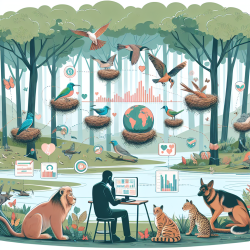Exploring the Depths of Illegal Wildlife Trade: A Call to Action for Practitioners
The global trade in illegal wildlife is a multi-billion dollar industry that poses significant threats to biodiversity and acts as a potential avenue for invasive species and disease spread. As practitioners dedicated to creating great outcomes for children, understanding the implications of illegal wildlife trade can enhance our ability to educate and empower future generations. This blog delves into the research findings from the article "Summarizing the Evidence on the International Trade in Illegal Wildlife" and highlights how practitioners can leverage these insights to improve their skills and encourage further research.
The Scope and Scale of Illegal Wildlife Trade
According to the research, the illegal wildlife trade is one of the largest illegitimate businesses globally, with an estimated value between US$5 billion and US$20 billion annually. The trade involves a wide range of species, including endangered animals such as tigers, elephants, and reptiles. The study utilized 12 years of seizure records compiled by TRAFFIC, the wildlife trade monitoring network, revealing 967 seizures involving massive quantities of ivory, tiger skins, live reptiles, and other endangered wildlife products.
Implications for Biodiversity and Health
The illegal wildlife trade has far-reaching implications for biodiversity and human health. When endangered species are commoditized, their harvest can reach unsustainable levels, threatening their survival. Moreover, the transport of large numbers of illegal live animals facilitates pathogen pollution, increasing the risk of zoonotic diseases. This is particularly concerning in regions like Southeast Asia, identified as hotspots for future emerging infectious diseases.
Strategies for Effective Control
Controlling the illegal wildlife trade requires a multi-pronged approach. Practitioners can play a vital role by implementing community-scale education programs that empower local people to value wildlife. Additionally, coordinated international regulation and increased national resources for enforcement are essential. By raising awareness and advocating for stronger enforcement measures, practitioners can contribute to the protection of biodiversity and public health.
Encouraging Further Research
The research highlights the need for more comprehensive data on the illegal wildlife trade. Practitioners are encouraged to engage in further research to better understand the magnitude and diversity of illegally traded wildlife. By collaborating with organizations like TRAFFIC and utilizing data-driven approaches, practitioners can contribute to the development of effective strategies for combating illegal wildlife trade.
To read the original research paper, please follow this link: Summarizing the Evidence on the International Trade in Illegal Wildlife.










